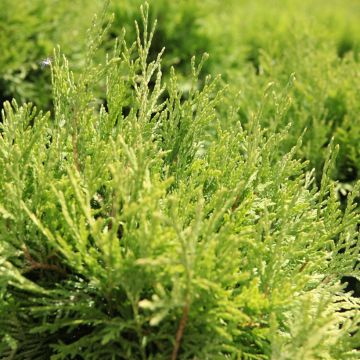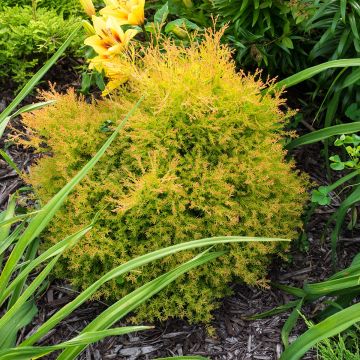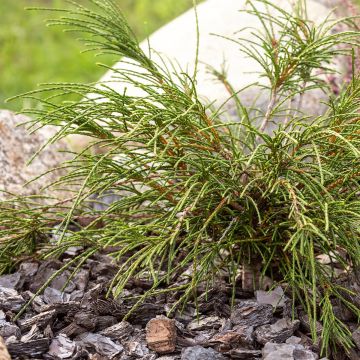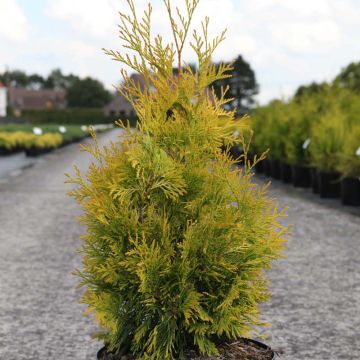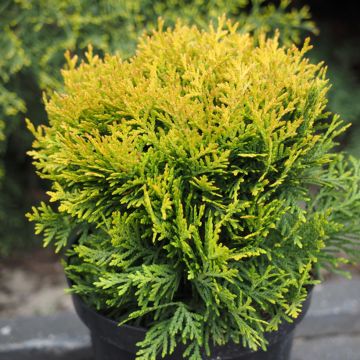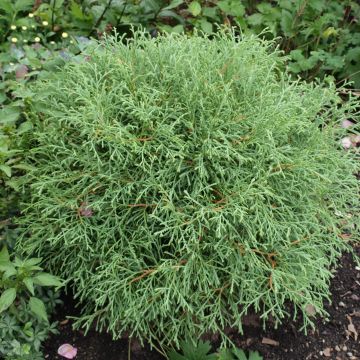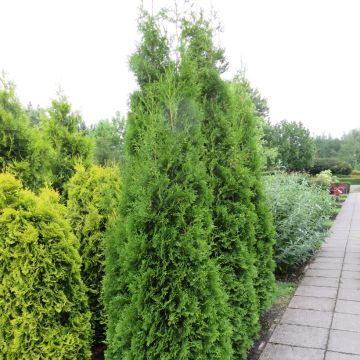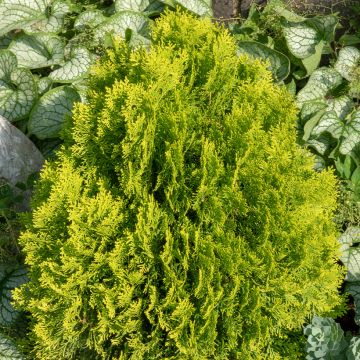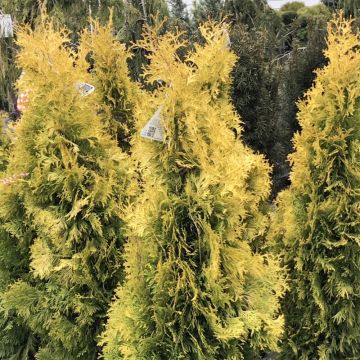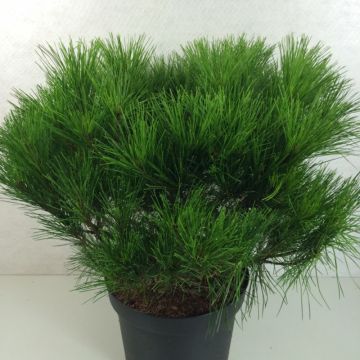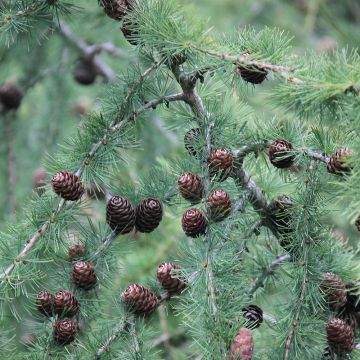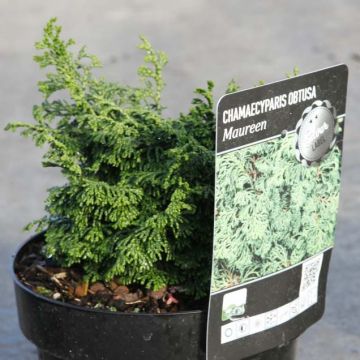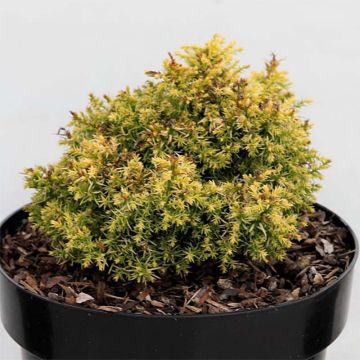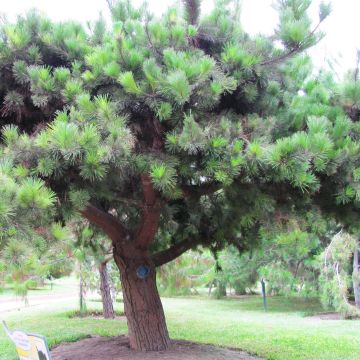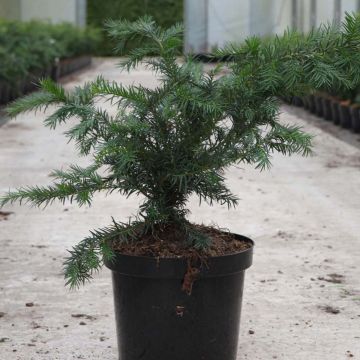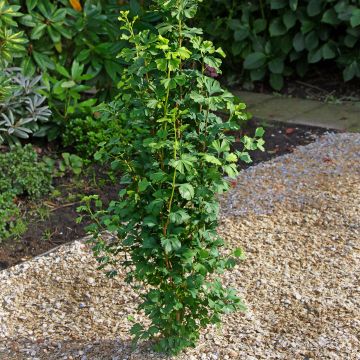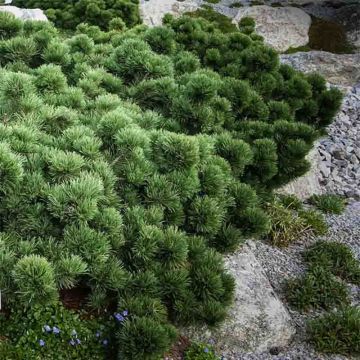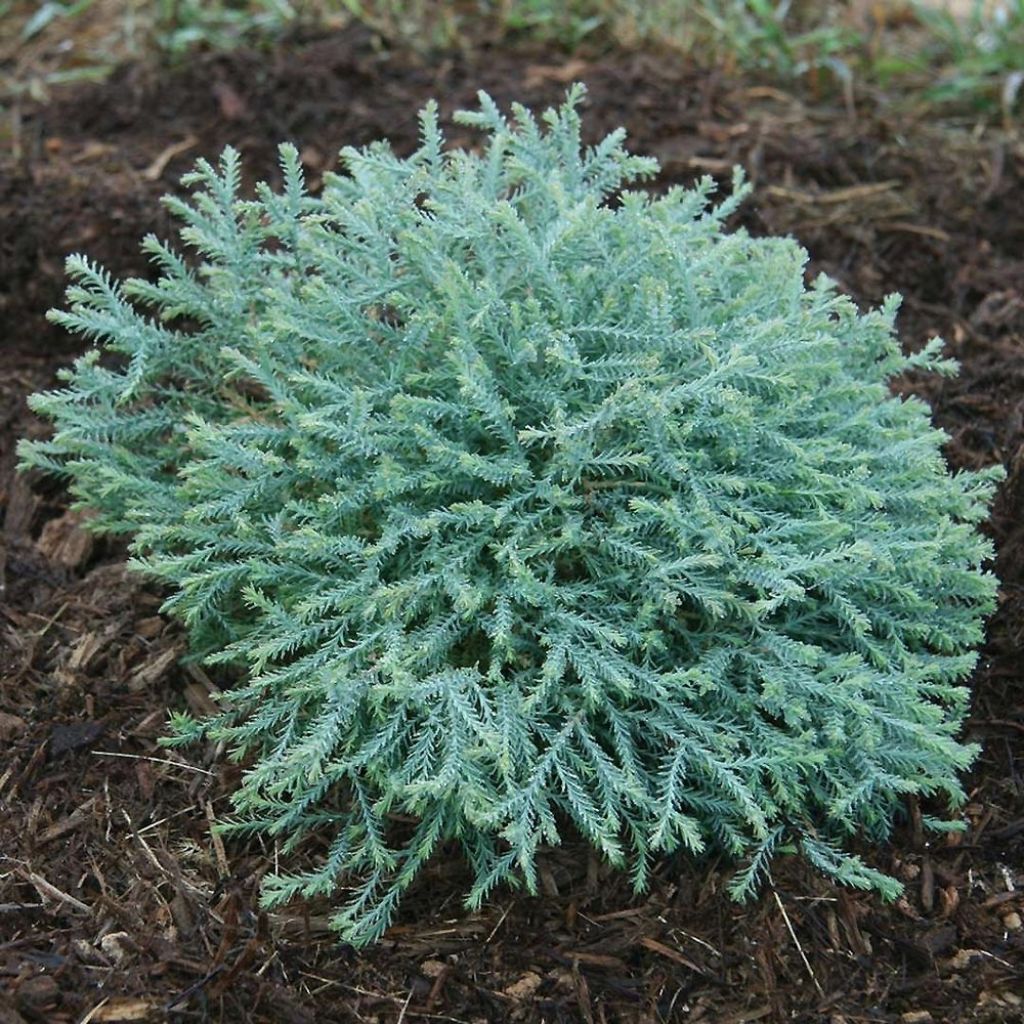

Thuja occidentalis Pancake Concesarini - Canadian Arborvitae
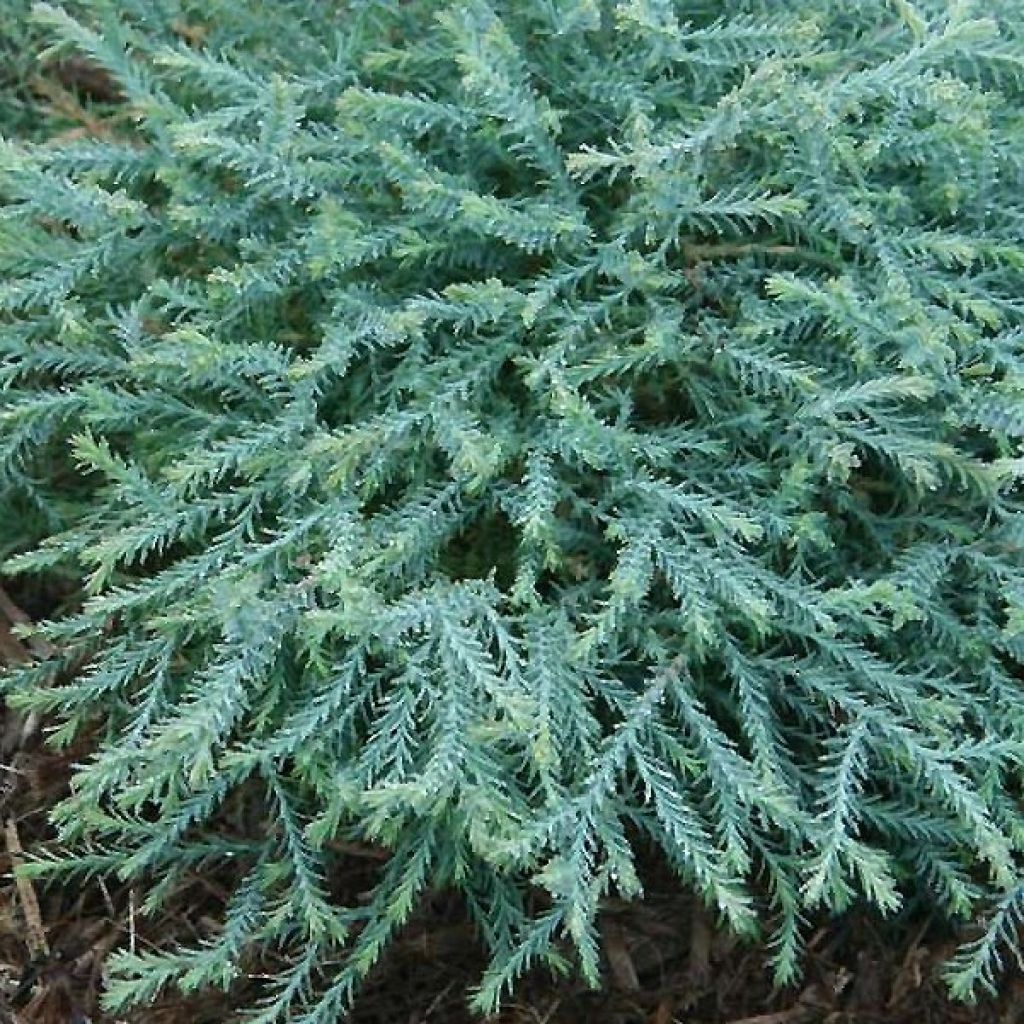

Thuja occidentalis Pancake Concesarini - Canadian Arborvitae
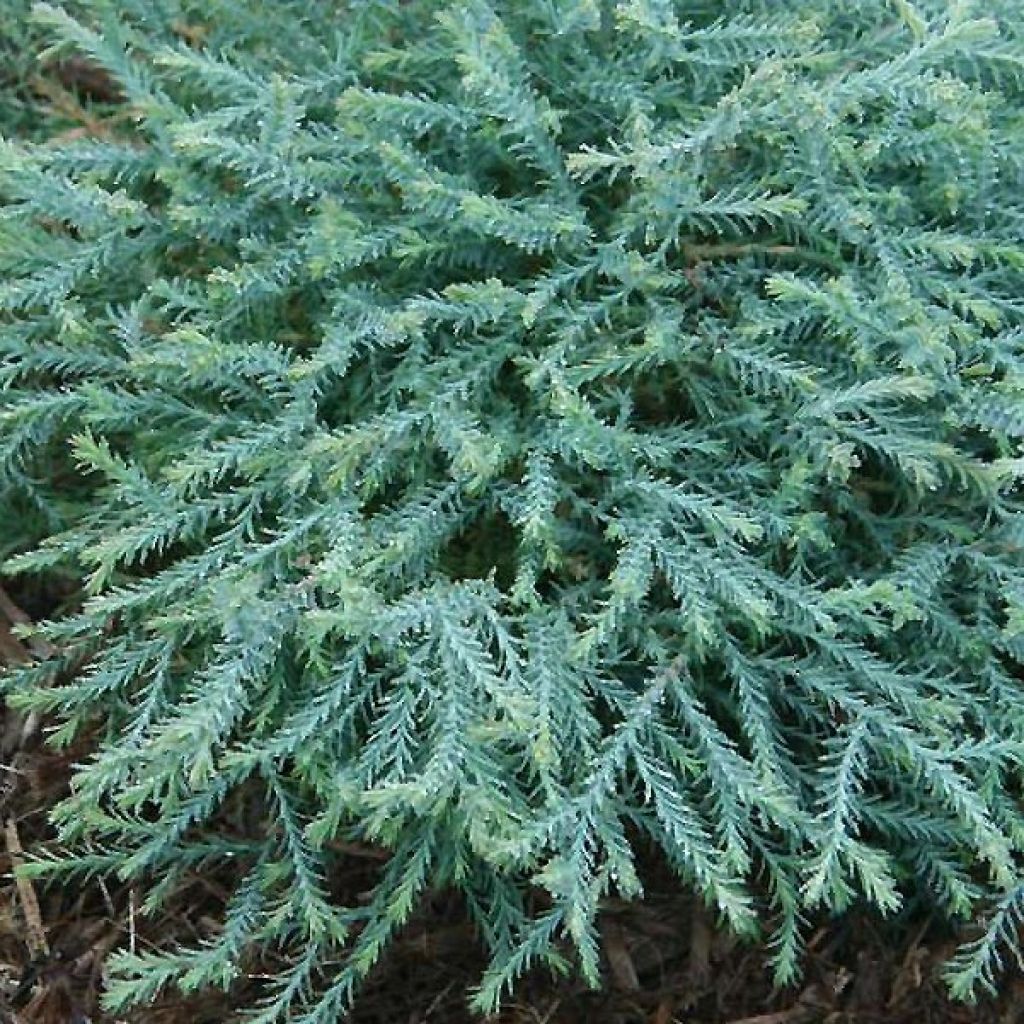

Thuja occidentalis Pancake Concesarini - Canadian Arborvitae
Thuja occidentalis Pancake Concesarini - Canadian Arborvitae
Thuja occidentalis Pancake™ 'Concesarini'
Eastern White Cedar, Northern White Cedar, American Arborvitae, Eastern Arborvitae
This plant carries a 24 months recovery warranty
More information
We guarantee the quality of our plants for a full growing cycle, and will replace at our expense any plant that fails to recover under normal climatic and planting conditions.
From €5.90 for pickup delivery and €6.90 for home delivery
Express home delivery from €8.90.
From €5.90 for pickup delivery and €6.90 for home delivery
Express home delivery from €8.90.
Does this plant fit my garden?
Set up your Plantfit profile →
Description
The Thuja occidentalis Pancake 'Concesarini' is a dwarf coniferous plant with fine evergreen foliage, initially soft green, turning blue with the freshness of autumn and winter evenings. The name Pancake refers to its compact and spreading habit that forms a flattened ball over time. Very hardy, it is particularly suitable for rockeries, container planting, and small gardens. Easy to maintain, it even tolerates scorching sun if watered during hot and windy periods.
The Thuja occidentalis, the Canadian Arborvitae or Eastern White Cedar, is sometimes called the Canadian White Cedar or Broom. It is an evergreen conifer of the cypress family native to northeastern North America. It is distributed over a wide geographic area that perfectly reflects the plasticity of its living conditions. In nature, it reaches a height of 15 to 20 m (49 to 66ft), adopting a beautiful conical habit and a trunk covered with a highly decorative reddish-brown bark. It is a perfectly hardy species, well adapted to temperate climates and poor, wet, or occasionally dry soils. Its almost rot-resistant wood, light, and cedar-scented, is easily flammable and lends itself to many uses. Introduced to Europe around 1536, it is one of the first trees to come from the New World. Since then, it has become a classic staple in our gardens, giving rise to more than 300 cultivars. Its lifespan is 300 years. In Central Europe, it replaces Italian cypresses in cemeteries, having become, like them, a symbol of immortality.
The Pancake™ 'Concesarini' variety has particularly graceful and fine foliage, with elongated twigs whose soft green imbricate scales turn icy blue with the colder temperatures of late season. When mature, it reaches 30 cm (12in) in height and 70 cm (28in) in width.
The Pancake Western Cedar will find its place in a small garden, in a rockery, or grouped together to form a carpet-like mass whose appearance is punctuated by the changing temperatures of the seasons. It can also be planted in a nice container on the terrace or balcony to enjoy this spectacle of colors. It pairs well with more disorderly shrubs, large stones, geometric lines of swimming pools or buildings, and masonry works. It can be associated with complementary grasses or different types of dwarf conifers, such as prostrate (Blue Chip Juniperus horizontalis), globose (Little Gem Norway Spruce), creeping (Siberian Carpet Cypress), or pyramidal (Picea glauca Conica). The true graphic qualities of conifers naturally impose themselves in the design of a contemporary garden, which prefers the aesthetics of shapes, silhouettes, and textures over the dance of flowers. These plants with their reassuring permanence structurally shape a bed, mark the paths, border the terrace, easily replacing the strong presence of trimmed boxwood or holly. The key is to play with volumes and colors.
Report an error about the product description
Thuja occidentalis Pancake Concesarini - Canadian Arborvitae in pictures


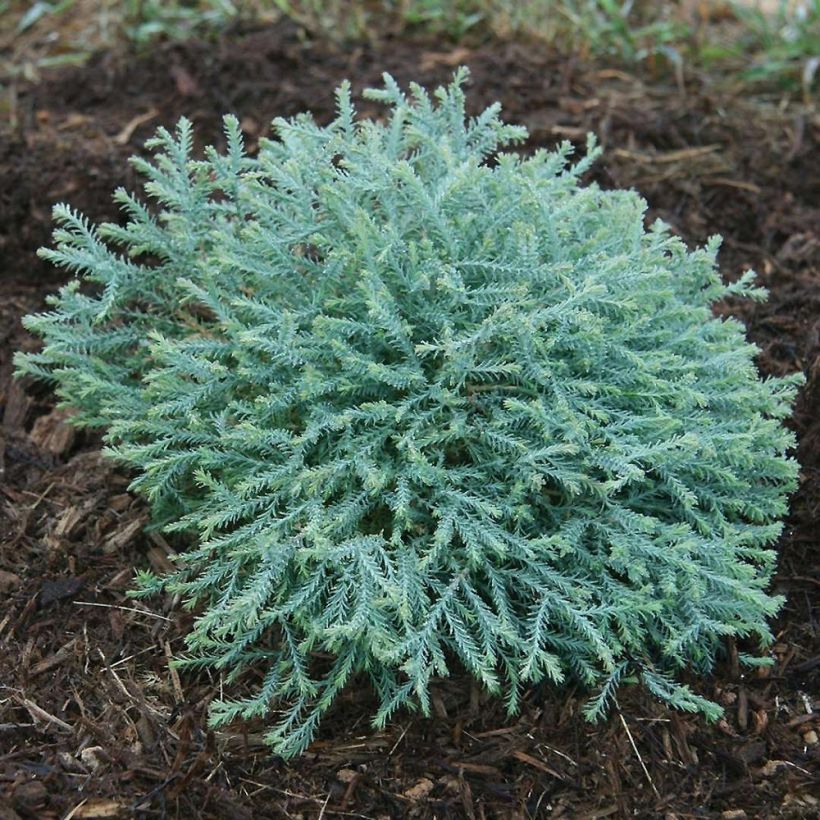

Plant habit
Foliage
Botanical data
Thuja
occidentalis
Pancake™ 'Concesarini'
Cupressaceae
Eastern White Cedar, Northern White Cedar, American Arborvitae, Eastern Arborvitae
Cultivar or hybrid
Other Thuya - Thuja
Planting and care
The Thuja occidentalis Pancake 'Concesarini' should be planted from September to November and from February to June in deep, ordinary, but loose and not too heavy, acidic, neutral or even slightly calcareous soil, while keeping it moist. It only fears extremely hot temperatures and prolonged drought. However, it requires a sunny or partially shaded exposure to thrive. Soak the root ball well before planting. Optionally, add organic amendment at planting and water generously during the first few years, especially during prolonged drought. In very poor soil, you can apply a special conifer fertilizer every April and cultivate the soil in summer. This hardy conifer (up to -25°C at least) does not require pruning.
Planting period
Intended location
Care
This item has not been reviewed yet - be the first to leave a review about it.
Conifers
Haven't found what you were looking for?
Hardiness is the lowest winter temperature a plant can endure without suffering serious damage or even dying. However, hardiness is affected by location (a sheltered area, such as a patio), protection (winter cover) and soil type (hardiness is improved by well-drained soil).

Photo Sharing Terms & Conditions
In order to encourage gardeners to interact and share their experiences, Promesse de fleurs offers various media enabling content to be uploaded onto its Site - in particular via the ‘Photo sharing’ module.
The User agrees to refrain from:
- Posting any content that is illegal, prejudicial, insulting, racist, inciteful to hatred, revisionist, contrary to public decency, that infringes on privacy or on the privacy rights of third parties, in particular the publicity rights of persons and goods, intellectual property rights, or the right to privacy.
- Submitting content on behalf of a third party;
- Impersonate the identity of a third party and/or publish any personal information about a third party;
In general, the User undertakes to refrain from any unethical behaviour.
All Content (in particular text, comments, files, images, photos, videos, creative works, etc.), which may be subject to property or intellectual property rights, image or other private rights, shall remain the property of the User, subject to the limited rights granted by the terms of the licence granted by Promesse de fleurs as stated below. Users are at liberty to publish or not to publish such Content on the Site, notably via the ‘Photo Sharing’ facility, and accept that this Content shall be made public and freely accessible, notably on the Internet.
Users further acknowledge, undertake to have ,and guarantee that they hold all necessary rights and permissions to publish such material on the Site, in particular with regard to the legislation in force pertaining to any privacy, property, intellectual property, image, or contractual rights, or rights of any other nature. By publishing such Content on the Site, Users acknowledge accepting full liability as publishers of the Content within the meaning of the law, and grant Promesse de fleurs, free of charge, an inclusive, worldwide licence for the said Content for the entire duration of its publication, including all reproduction, representation, up/downloading, displaying, performing, transmission, and storage rights.
Users also grant permission for their name to be linked to the Content and accept that this link may not always be made available.
By engaging in posting material, Users consent to their Content becoming automatically accessible on the Internet, in particular on other sites and/or blogs and/or web pages of the Promesse de fleurs site, including in particular social pages and the Promesse de fleurs catalogue.
Users may secure the removal of entrusted content free of charge by issuing a simple request via our contact form.
The flowering period indicated on our website applies to countries and regions located in USDA zone 8 (France, the United Kingdom, Ireland, the Netherlands, etc.)
It will vary according to where you live:
- In zones 9 to 10 (Italy, Spain, Greece, etc.), flowering will occur about 2 to 4 weeks earlier.
- In zones 6 to 7 (Germany, Poland, Slovenia, and lower mountainous regions), flowering will be delayed by 2 to 3 weeks.
- In zone 5 (Central Europe, Scandinavia), blooming will be delayed by 3 to 5 weeks.
In temperate climates, pruning of spring-flowering shrubs (forsythia, spireas, etc.) should be done just after flowering.
Pruning of summer-flowering shrubs (Indian Lilac, Perovskia, etc.) can be done in winter or spring.
In cold regions as well as with frost-sensitive plants, avoid pruning too early when severe frosts may still occur.
The planting period indicated on our website applies to countries and regions located in USDA zone 8 (France, United Kingdom, Ireland, Netherlands).
It will vary according to where you live:
- In Mediterranean zones (Marseille, Madrid, Milan, etc.), autumn and winter are the best planting periods.
- In continental zones (Strasbourg, Munich, Vienna, etc.), delay planting by 2 to 3 weeks in spring and bring it forward by 2 to 4 weeks in autumn.
- In mountainous regions (the Alps, Pyrenees, Carpathians, etc.), it is best to plant in late spring (May-June) or late summer (August-September).
The harvesting period indicated on our website applies to countries and regions in USDA zone 8 (France, England, Ireland, the Netherlands).
In colder areas (Scandinavia, Poland, Austria...) fruit and vegetable harvests are likely to be delayed by 3-4 weeks.
In warmer areas (Italy, Spain, Greece, etc.), harvesting will probably take place earlier, depending on weather conditions.
The sowing periods indicated on our website apply to countries and regions within USDA Zone 8 (France, UK, Ireland, Netherlands).
In colder areas (Scandinavia, Poland, Austria...), delay any outdoor sowing by 3-4 weeks, or sow under glass.
In warmer climes (Italy, Spain, Greece, etc.), bring outdoor sowing forward by a few weeks.

































